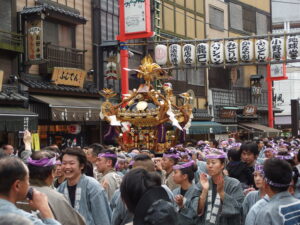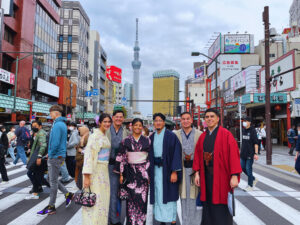Ramen holds a cherished spot in Japanese cuisine, captivating both locals and travelers alike with its flavorful broth and slurp-worthy noodles. Whether you’re strolling through bustling city streets or exploring quaint neighborhoods, stumbling upon a ramen shop is practically inevitable—and trust me, disappointment is not on the menu.
Now, let’s delve into the wonderful world of ramen and uncover the diverse types of Ramen awaiting eager taste buds across Japan. Picture this: rich and creamy tonkotsu broth simmered to perfection, delicate shoyu broth infused with soy sauce goodness, hearty miso broth bursting with umami flavor, and refreshing shio broth seasoned with just the right amount of salt. Each variety offers a unique taste sensation, reflecting regional preferences and culinary traditions.
But that’s just the beginning. Let’s not forget about the noodles—thick or thin, straight or curly, the possibilities are endless. Now, let’s talk toppings. From succulent slices of cha shu pork and marinated soft-boiled eggs to crisp bamboo shoots and tangy pickled ginger, the toppings are where ramen truly shines. And for those looking to add an extra kick to their bowl, a dollop of spicy chili paste or a sprinkle of fragrant sesame seeds does the trick.
So, whether you’re a ramen connoisseur or a newbie eager to dive into the world of Japanese noodles, there’s a bowl of ramen out there with your name on it. What are you waiting for? Grab your chopsticks and get ready to embark on a delicious journey through the types of Ramen waiting to be savored across Japan!
Check out every Japanese food you should try, fusion dishes, types of ramen, ramen chains, yakitori and food and drinks at izakaya, fast food chains in Japan and healthy food in Japan!
One of the best ways to explore Tokyo is to visit the local areas and immerse yourself in the local culture. If you want to explore local areas, we have created scavenger hunt adventures personalised to your interests, filled with fun facts, clues and puzzles. If you’re curious, you can check out the games here! Check out the Flip Japan Games here! |
Not sure about you, but ramen is one of my favourite Japanese foods and it’s perfect for many occasions: a filling lunch, a quick meal when you’re in a hurry, the drunk food that will recharge you for more drinks, and the hangover meal that will perk you right up from a long night.
If you’re feeling up to it, pair your ramen with a Japanese beer or some amazing Japanese drinks!
Ramen is an art in Japan. There are so many different types of ramen from different regions of Japan with different ways of making broths, toppings, and sauces. On top of that, there are also fusion ramens.
Ramen competitions are held regularly in Japan and ramen chefs are constantly coming up with unique ideas to create the most amazing ramen experience for their audiences.
Before we start, let’s quickly go over ramen etiquette.
Etiquette
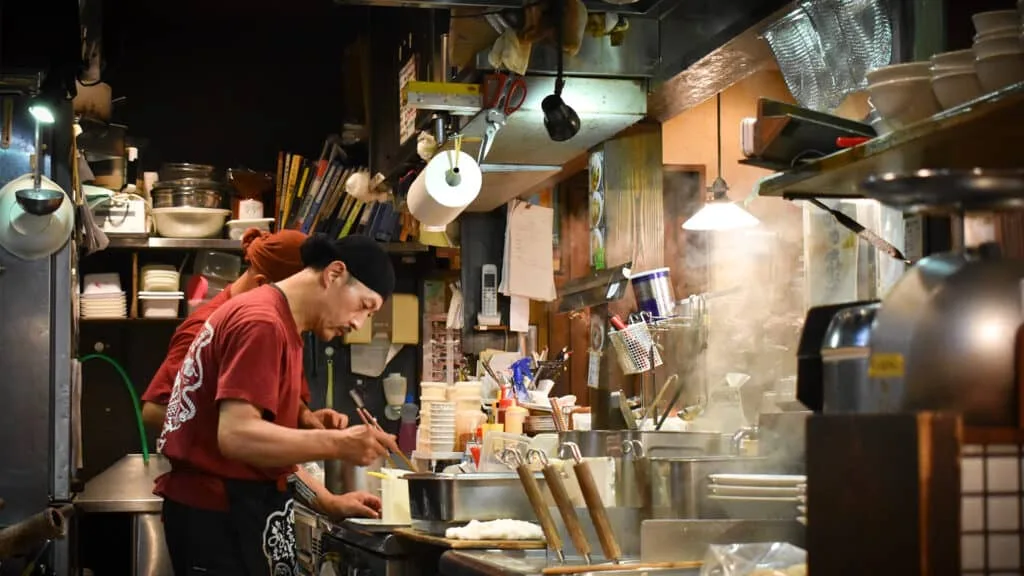
Making slurping sounds is considered extremely rude in many societies, but it’s very normal in Japan and even respectful. The slurping noises tell the restaurant owner that the customer is enjoying the ramen.
Another reason people slurp their ramen in Japan is because it’s served very hot, and slurping makes it slightly cooler. A Japanese TV show also conducted a test with a slurper and non-slurper, and they weighed their two bowls after they had finished their noodles. The non-slurper had more broth left over. So don’t feel shy or embarrassed, follow the example of the Japanese person next to you.
Chopsticks are also a challenge, but nothing that can’t be mastered with some practice. My advice? Don’t go to a ramen place wearing a white shirt, it won’t remain white. Believe me. I have tried.
Now that we’ve gone through the different manners to keep in mind, here is a breakdown of every type of ramen (as of now)!
Ramen Broths
There are mainly four kinds of ramen broth out there: shio, shōyu, tonkotsu and miso, but there are also a handful of new, modern and fusion broths! Here’s a breakdown of the four so you can decide which one you’d like to try out if not all.
Shio (Salt)
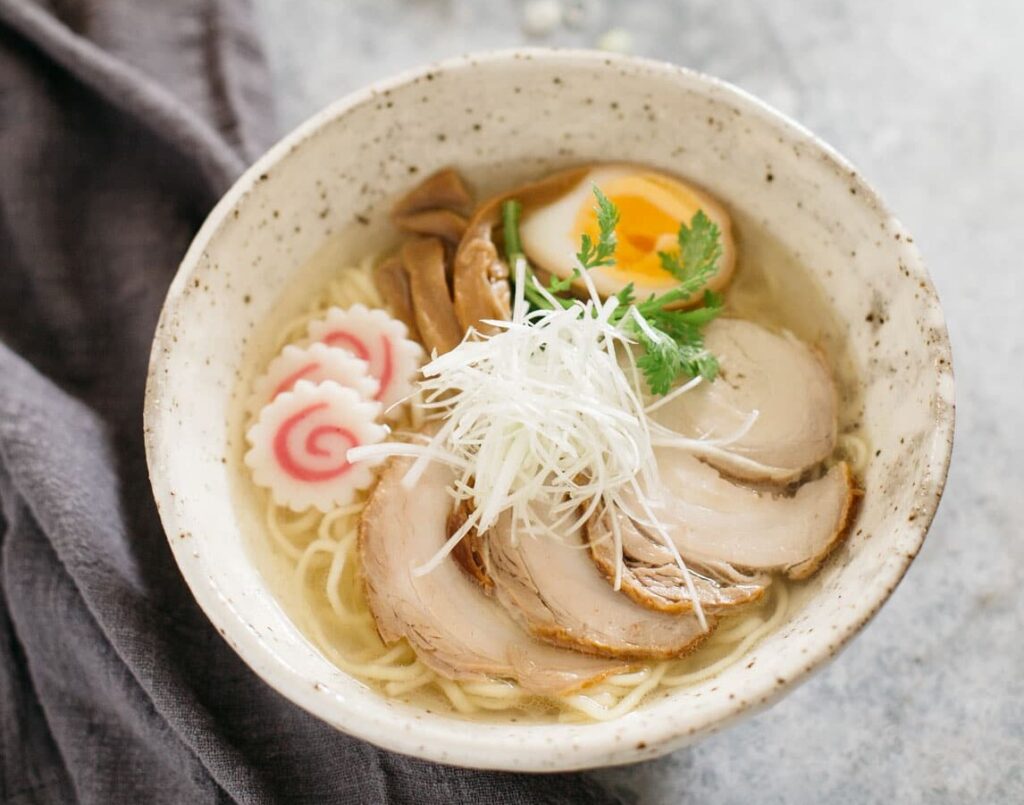
This is the lightest broth of all, also the oldest. It’s usually very clear with a pale colour. It is made with a lot of salt along with vegetable stock or meat stock, and is usually served with thin ramen noodles.
Shōyu (Soy sauce)
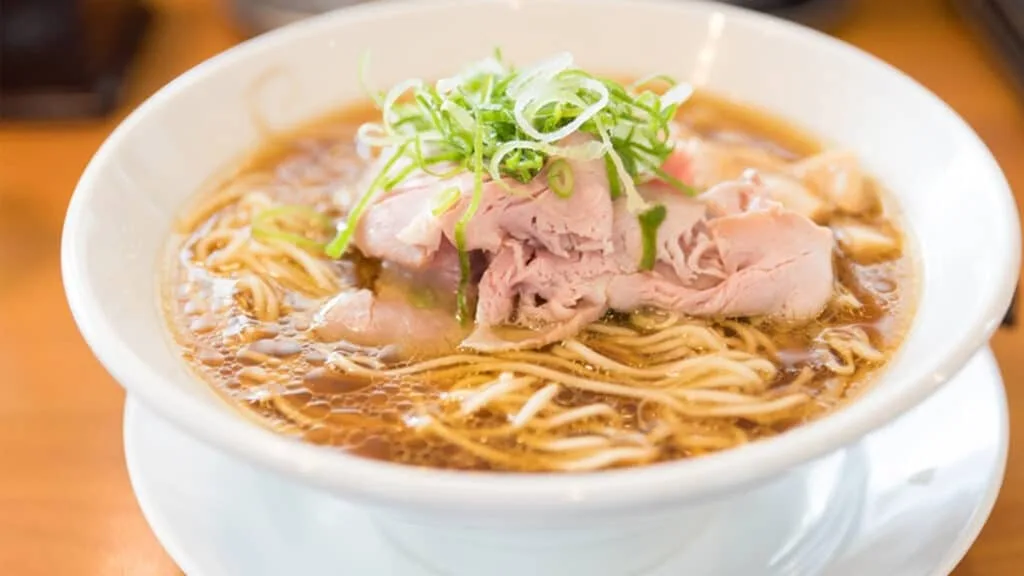
Although shōyu means soy sauce, shōyu broth doesn’t just contain soy sauce. It is made with vegetable stock and meat, usually chicken, along with a lot of soy sauce. It is still very light, with a hint of salt.
Miso
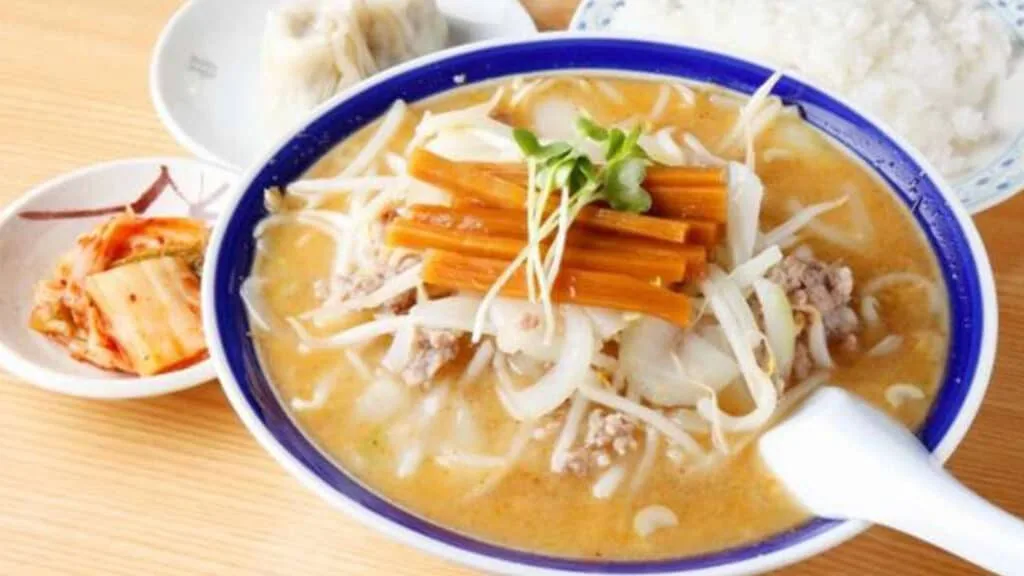
Though miso soup is made and eaten commonly amongst households, miso ramen didn’t become popular until the mid-1900s. Originating in Hokkaido, this broth is made with miso as well as meat broth. The broth is slightly thicker than shōyu broth.
Karē (Curry)

This is perhaps one of the newest ramen broth types. It is made with pork bones and vegetables, with a finishing touch of curry seasoning.
Ingredients Brewed in the Broth
Other ingredients such as meat are sometimes used to enhance the taste of the broth of different types of ramen.
Tonkotsu (Pork Bones)
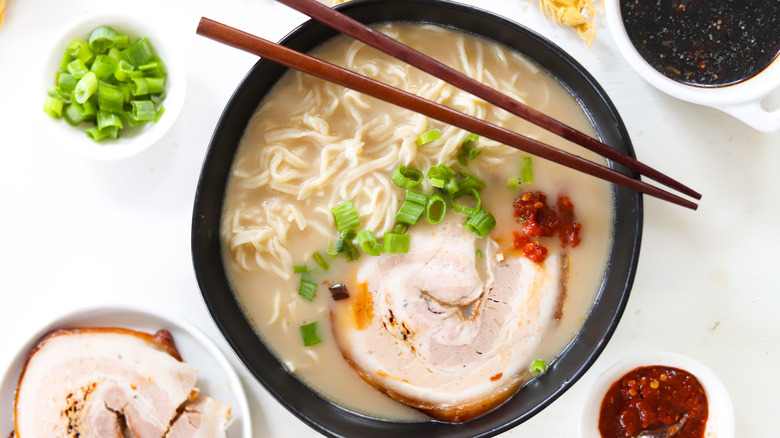
This is one of the four main broths, as mentioned above. Tonkotsu is the thickest of the four, made by cooking pork bones, pork collagen, and fat for long hours. Some restaurants brew the broth for the entire day or even longer, making the broth extra rich and thick. It’s quite cloudy and has a strong pork taste.
Toripaitan (Chicken)
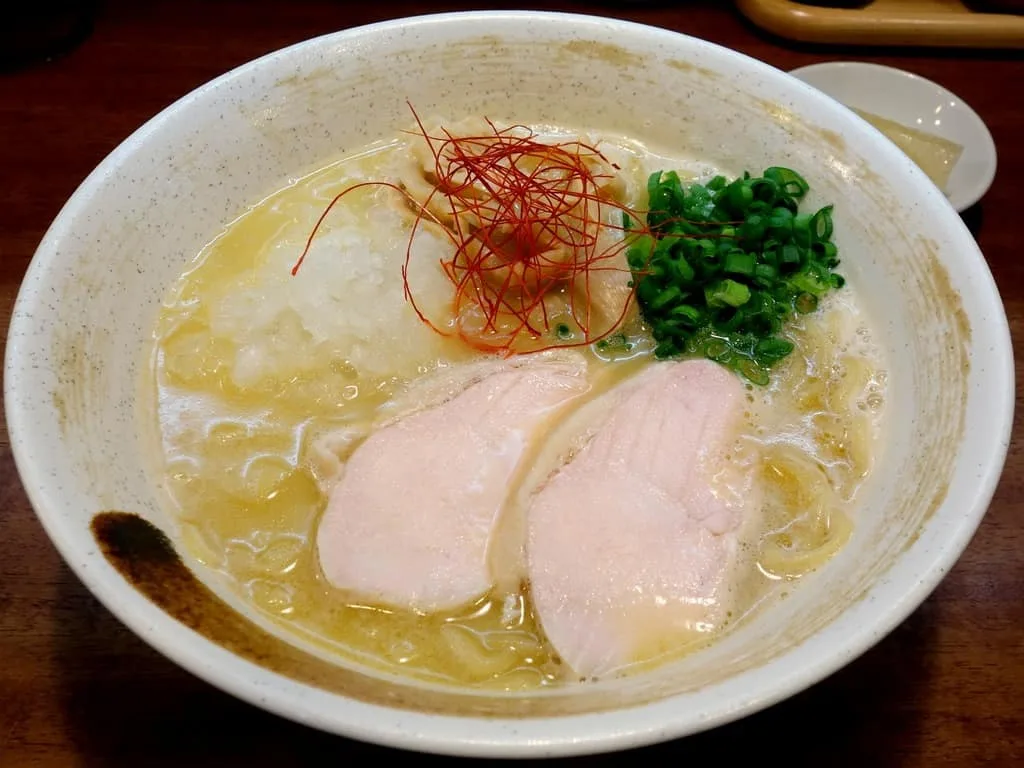
Toripaitan hasn’t been around for long but it has gained a lot of popularity, especially in recent years. It is quite light with a hint of the taste of chicken.
Kyōka (Fish)
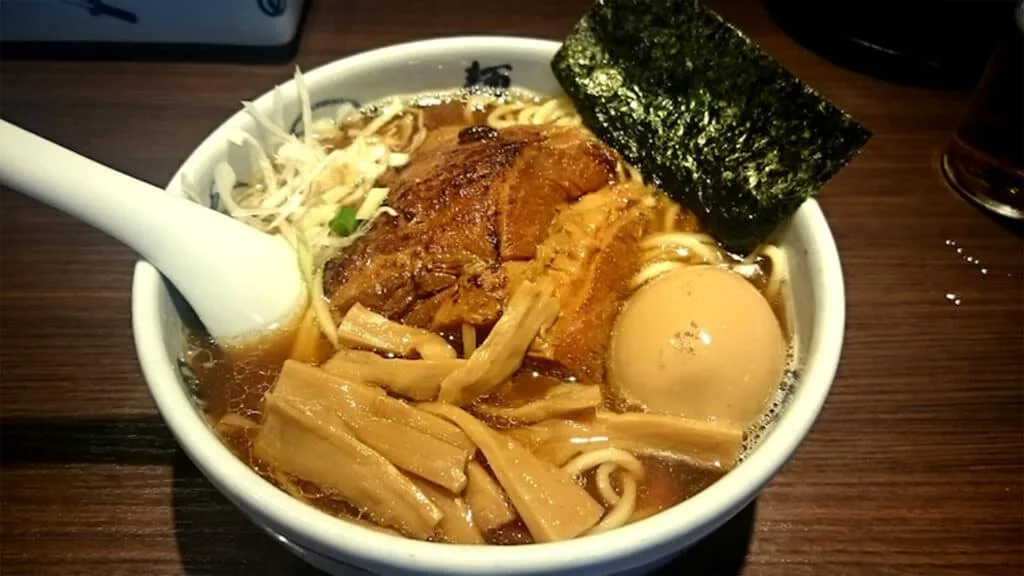
Kyōka has become very popular in recent years. It’s brewed fish bones and fish meat, sometimes with pork bones as well. It can be very rich and thick, depending on the particular restaurant.
Tomato
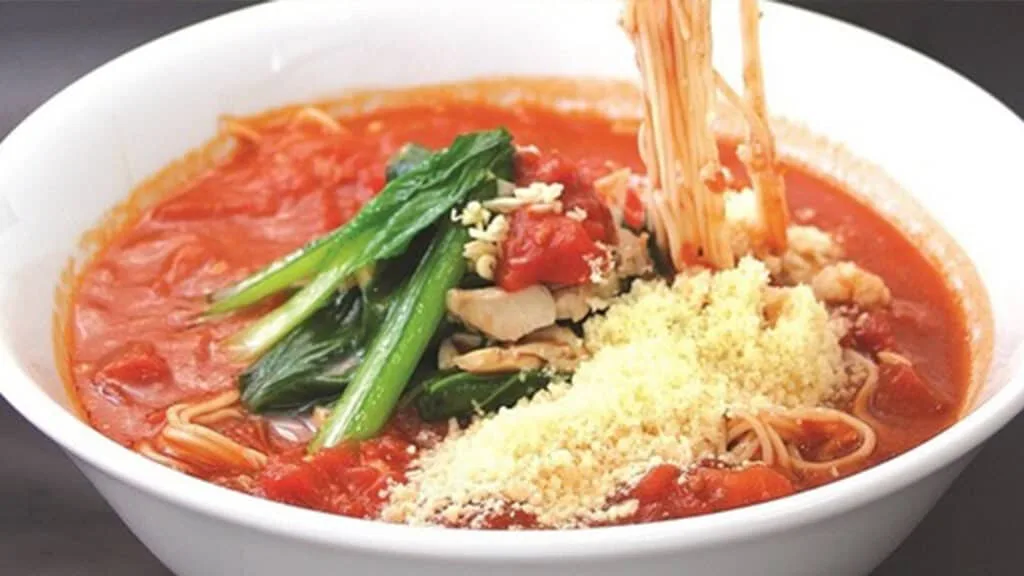
There are many different types of fusion Japanese food. Tomato ramen reminds me of tomato-based pasta, but lighter and with more broth. Basil is occasionally used, adding a refreshing aftertaste to the ramen. There are vegetarian tomato ramens and tomato ramens for meat-lovers too.
Vegetarian/Vegan
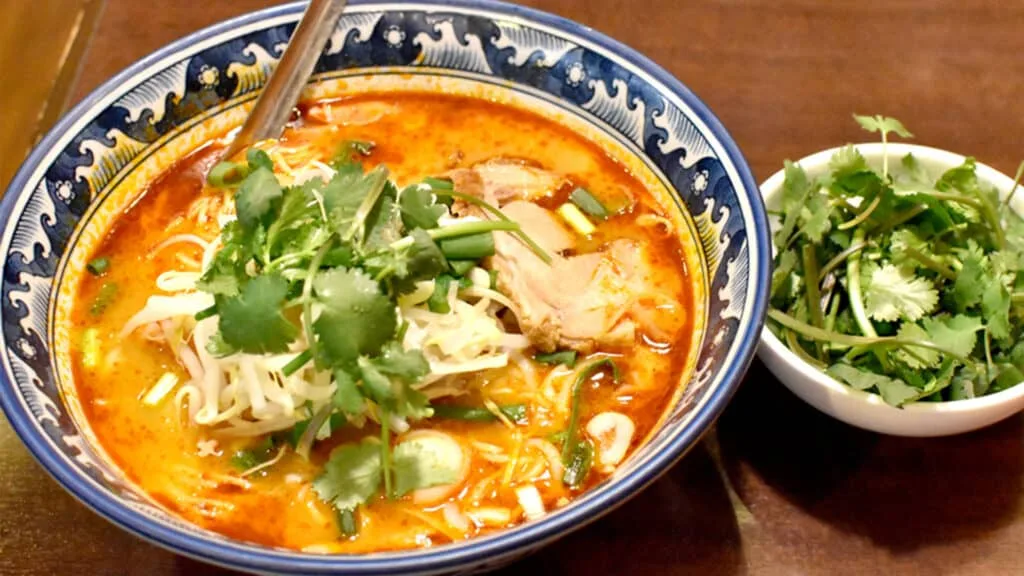
With the increasing number of vegetarians and vegans in our society today, a few ramen restaurants have begun offering vegetarian options, though it’s not yet widespread. Vegetarian ramen typically features tomato, shiyo, or miso broth topped with vegetables. One of the most famous ramen chains, Ichiran, recently launched a branch serving exclusively vegan ramen.
As for the ingredients used in the broth to add a special zest, butter originated in Hokkaido, the land of delicious milk and dairy products. Ramen shops in Hokkaido started adding butter to their ramen, creating an extra creamy texture along with a milky aftertaste.
Cheese
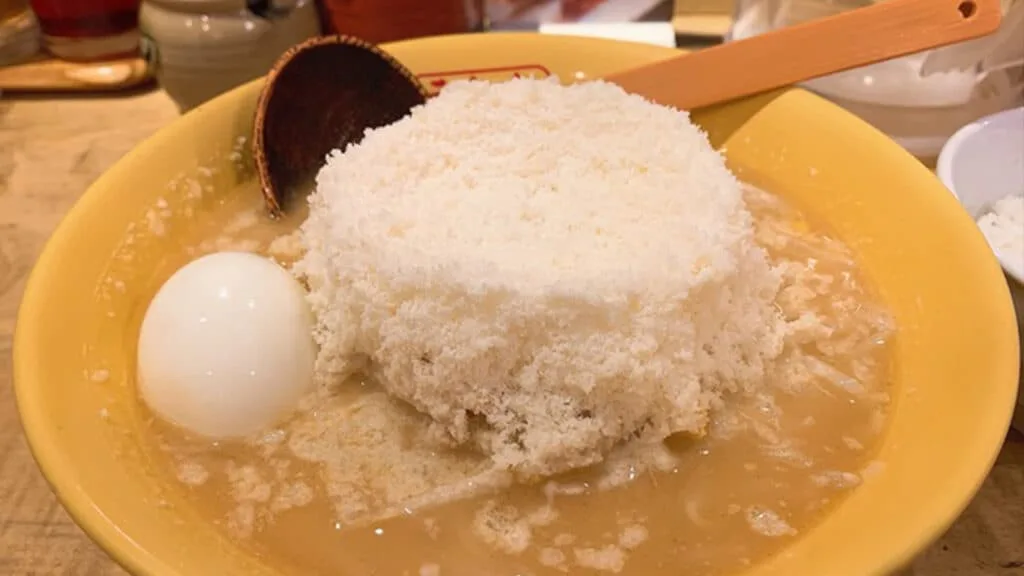
Cheese ramen might sound very strange but it is absolutely amazing! It is a popular topping for Korean noodles and has taken its place as one of the most unique and must-try ramens. One of the most famous restaurants that serves cheese ramen is Tukumo Ramen. Just check out this photo! It looks crazy but once you mix in the cheese and the cheese melts into the broth, it creates a perfect thick, creamy texture and taste.
Tom Yum
Tom yum originated in Thailand and is one of the most popular soups available. Recently, tom yum ramen has been appearing in various restaurants as a seasonal option, adding a blend of spiciness and slight sourness to the broth, imparting a unique flavor to the ramen.
Truffle
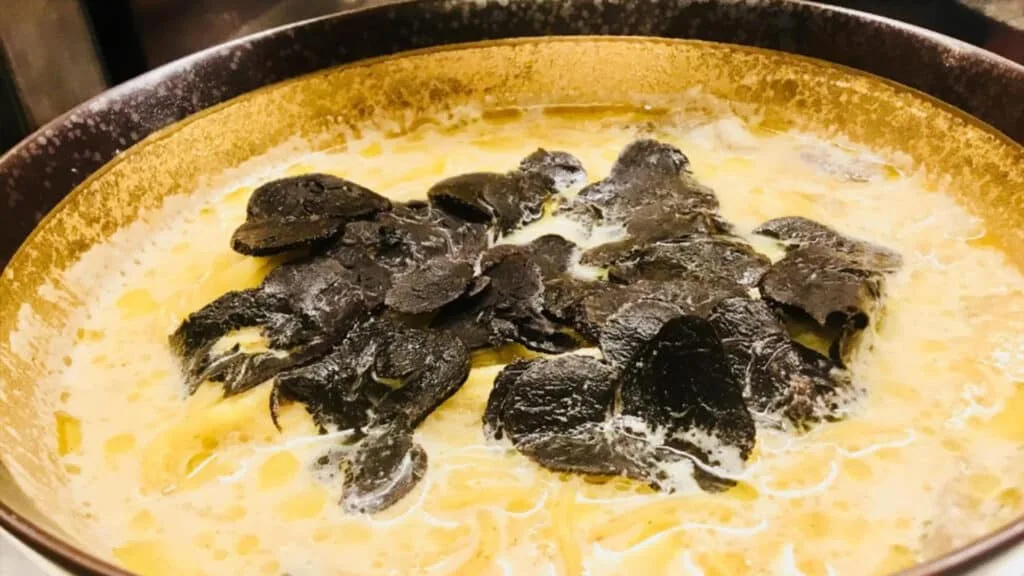
Tsuta Ramen restaurant is the first ever ramen restaurant to receive a Michelin Star and is also famous for adding truffle sauce to the broth. The truffle taste is not overwhelming; it just adds a unique aftertaste to the ramen.
Yuzu
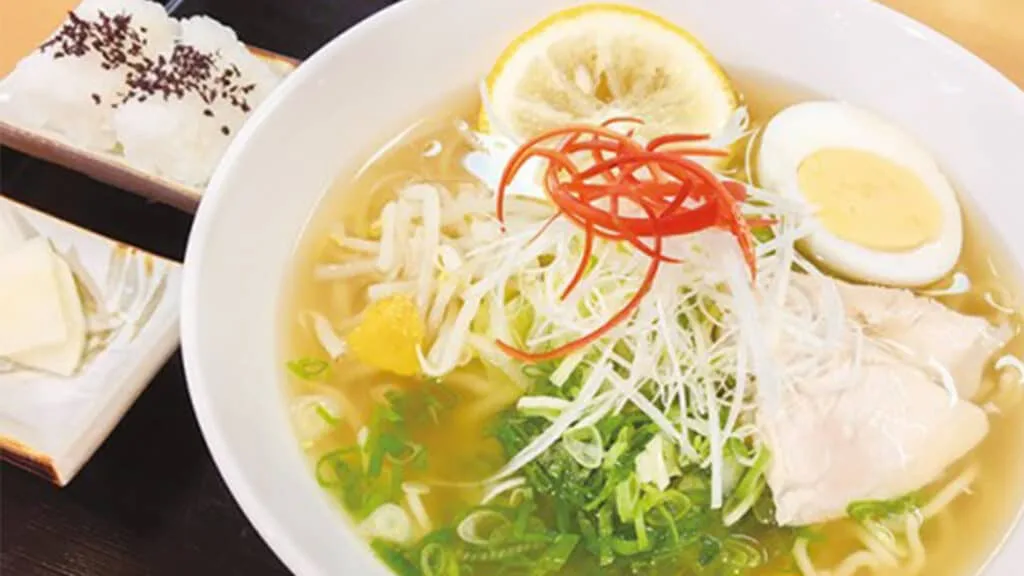
Yuzu is a citrus fruit that has a sweet and sour flavour. Ramen restaurants usually serve yuzu ramen with a shio broth. It is especially popular in summer since restaurants serve cold ramen with this flavour for a refreshing and cooling aftertaste.
Ways to Enjoy Your Bowl of Ramen
Most of the time when you think of ramen, you probably think of noodles in soup, but there are actually other ways to enjoy ramen.
Tsukemen
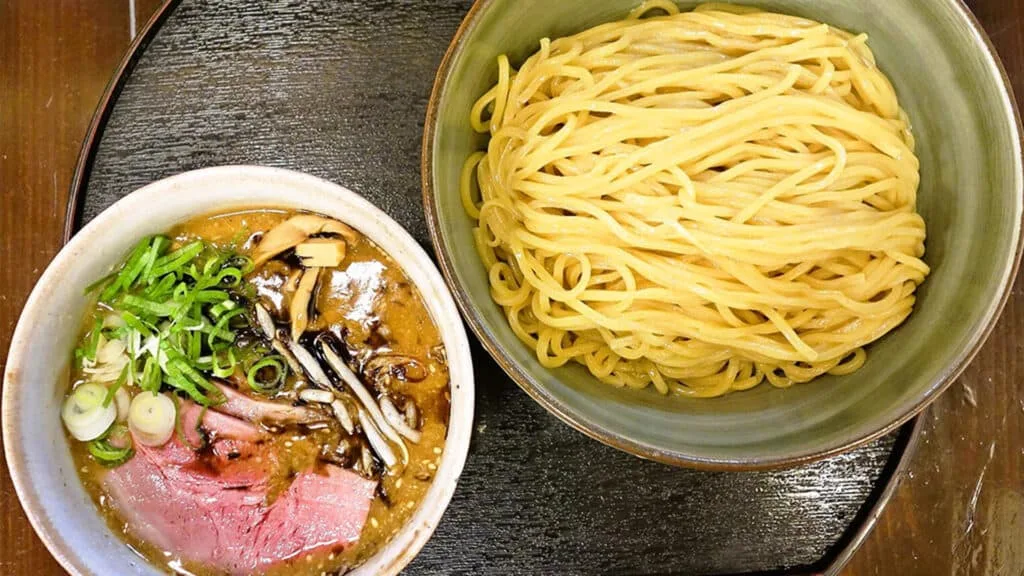
Tsukemen is where you have the noodles in one bowl and broth in another. You eat tsukemen by picking up your noodles with your chopsticks, dipping them into the broth and then popping it into your mouth. The broth of tsukemen tends to be richer and saltier, and the noodles tend to be thicker
Aburasoba
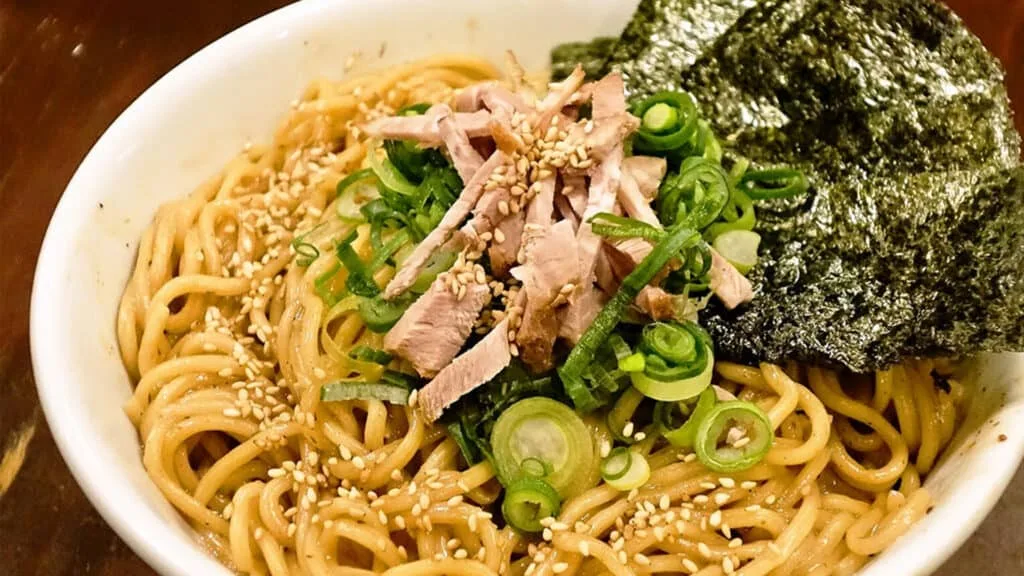
Abura means “oil”. Aburasoba is ramen in an oil and sauce mix. Picture fried noodles with a tiny bit more sauce and oil.
Mazesoba
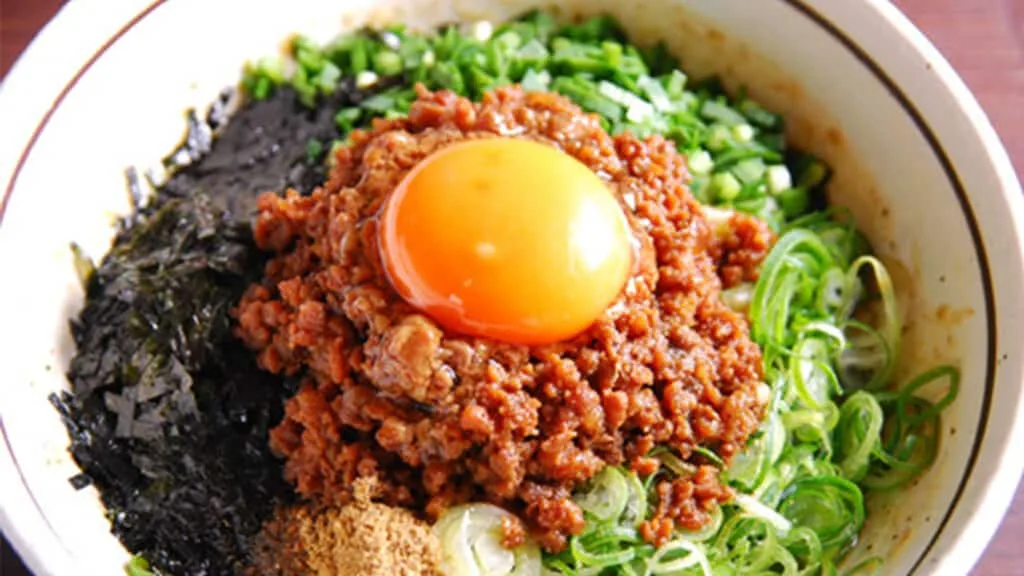
Mazesoba originated in Taiwan and although it is similar to aburasoba, it has a lot less oil. Mazesoba has dry noodles at the bottom, with toppings cooked with a pinch of sauce. You soften the noodles with the sauce by stirring everything together (“maze” means to mix) before eating it.
Ramen side dishes
Rice
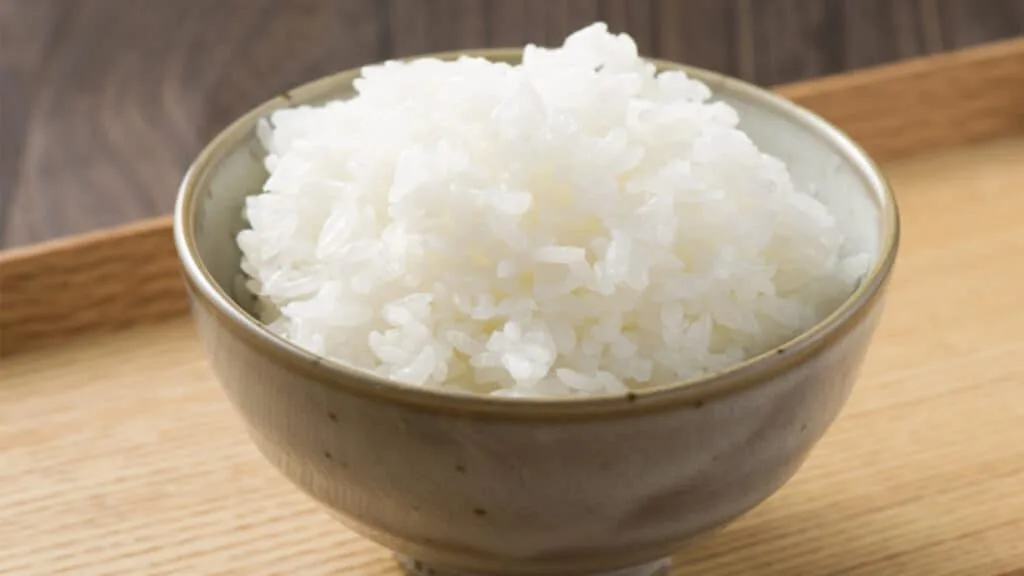
This has always amazed me but a lot of Japanese people have rice with their ramen. After finishing their ramen, they take their rice and place it into the remaning broth in the bowl, making a small risotto. For those of you who don’t think one bowl of ramen is enough or are a bit bored with the texture after eating all the noodles, you can definitely consider this option!
Gyōza
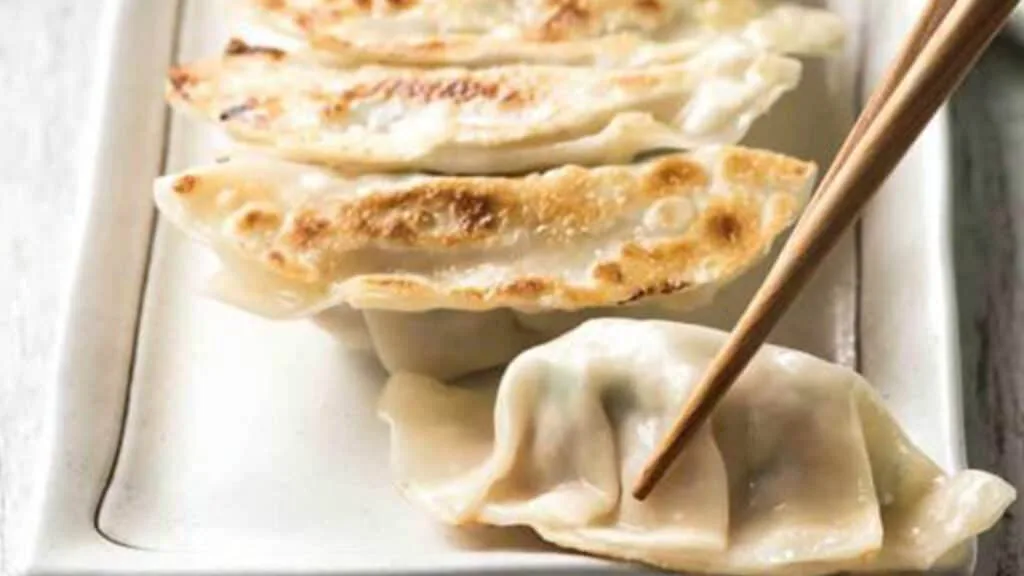
Gyoza, often served as a side dish to ramen, perfectly complements the rich flavors of the soup. These delectable dumplings, filled with a savory mixture of ground meat and vegetables, boast a crispy exterior that contrasts wonderfully with the tender texture of the ramen noodles. The combination of dipping gyoza into a tangy soy-based sauce while savoring a bowl of piping hot ramen creates a delightful dining experience that is cherished by many ramen enthusiasts worldwide.
Ramen Toppings

Whenever I bring a foreign friend to a ramen restaurant, they tend to ask me questions like, “what’s that on the ramen?” or “what’s this on the ramen?” To be honest, I don’t always know. So, for your and my own education, here is a breakdown of every common topping you see on different types of ramen.
Nori
Nori is seaweed. Your ramen will almost always be served with two pieces of seaweed, sometimes even more. Let it soak up all of the broth before you put it in your mouth.
Menma
Menma is a Japanese condiment made from lacto-fermented bamboo shoots. The bamboo shoots are dried in the sun or through other means before the process of fermentation. Menma is a common topping for noodle soups, notably ramen.
Negi
This refers to finely chopped-up green onion. Depending on the bowl of the ramen, the quantity of green onion can change drastically.
Cha Shu
Cha Shu are thin slices of braised pork belly. They are tender flavourful and the most common topping on ramen.
Ajitama
Ajitama (‘aji’ means flavour and ‘tama’ is the short form of ‘tamago’ which means egg) are half-boiled eggs with sweet soy sauce flavouring. It’s commonly used as a topping on ramen in Japan, but can also be eaten on its own as a snack. Most ramen restaurants will serve ajitama ala carte on their menus.
Ramen is undoubtedly a popular Japanese dish, often seen in anime and manga and movies. However, what we don’t get to see in those media is the complexity and creativity of making ramen. So stop by a ramen restaurant, go crazy with the toppings and broths, and have yourself a good time!
Check out every Japanese food you should try, fusion dishes, types of ramen, ramen chains, yakitori and food and drinks at izakaya, fast food chains in Japan and healthy food in Japan!





